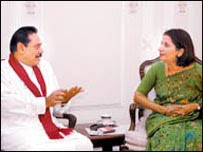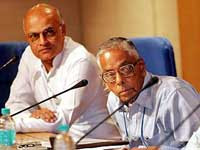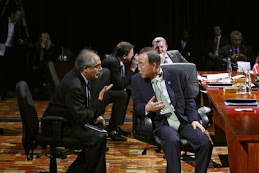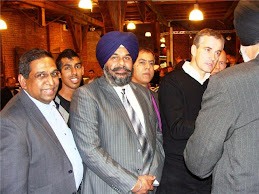Wednesday, January 18, 2023
I have to pay Rs. 100 mn over no fault of mine: Maithripala - Breaking News | Daily Mirror
I have to pay Rs. 100 mn over no fault of mine: Maithripala - Breaking News | Daily Mirror: Former President Maithripala Sirisena said today he has had to pay a compensation of Rs. 100 million to victims of Easter Sunday attacks not because of his fault but because the officials appointed by him had not carried out their responsibility properly. ..
Saturday, March 7, 2020
Saturday, August 12, 2017
Thursday, August 10, 2017
Why I’m No Longer Talking to White People About Race..!!! By Prof.Charles Sarvan Ponnuthurai, Berlin,Germany
Words, words, words (‘Hamlet’, Act 2, Scene 2)
What follows arises from reading Why I’m No Longer Talking to White People About Race (2017) by Reni Eddo-Lodge; born (1989) in London to Nigerian parents. The author clarifies that her decision relates to those whites (the majority) who refuse to accept there is racism in England. (In such contexts, rather than “racism” I have suggested, somewhat tongue-in-cheek, the more accurate and specific term “colourism”. Derrida wrote that some words are inappropriate but not having an alternative we use them, placing them ‘under erasure’: the word “racism” – again, in certain circumstances - is one of them.) Some of what Eddo-Lodge says is related to Sri Lanka.
Language is the most vital of human inventions. It’s Shakespeare’s genius that in ‘Richard 11’ when Mowbray is sentenced to life-long exile, he doesn’t lament the loss of family and friends; of a familiar and loved landscape but the loss of language. It’s through language that we communicate our thoughts and express our feelings. To alter and use words from a ‘pop’ song, it may only be words, but words are all we have. Words enable us, each from the island of our individual self, to attempt to build bridges of communication with other islanded individuals and groups. What we don’t encounter, whether personally or through language, remains unknown to us. For example, I’m a British citizen; I’ve lived, studied and worked in England; England is my second Heimat, and yet the following statement read just the other day, came as a surprise to me: “proportionally, Chinese people experience higher levels of fear and violence than any other minority group in the UK” (The Good Immigrant, edited by Nikesh Shukla, 2016, p. 43). One does not immediately accept this statement but a certain awareness is created. Eddo’s title reflects repeated attempts to communicate with whites, and failure: so too with Sri Lanka and the racial divide. (The inadequacy, if not failure, of language must particularly puzzle and pain those in the Humanities, more specifically, those in the discipline of Literature – Literature is made up entirely of language; and language, of words.)
Racism (Colourism?) is not a problem for white people, writes Eddo. For them, white is the norm and all other colours are a deviation: she dislikes the term ‘non-white’ because it suggests a lack. In an essay, ‘Forming blackness through a screen’, Eddo writes that white is neutral and invisible; that is, unnoticed. Similarly, being Sinhalese in Sri Lanka is not a problem for Sinhalese but an advantage. I turn to Martin Jacques, a British academic and his personal tragedy out of which something positive was extracted. “Like every white person, I had never experienced [colour prejudice] myself: the meaning of colour was something I had to learn. The turning point was falling in love with my wife, an Indian-Malaysian, and her coming to live in England… Colour is something white people never have to think about because for them it is never a handicap... but rather the opposite, a source of privilege” (Martin Jacques, “The global hierarchy of race“. The Guardian, London, 20 September, 2003, p. 23.) The last sentence can be applied to Sinhalese living in Sri Lanka. Jacques’ wife was sent by her law firm to Hong Kong: I suppose one of the reasons was that she was fluent in Cantonese. Martin Jacques accompanied her to continue his research into China; his wife fell ill; was admitted to hospital (it was in 2000, and she was thirty-three) but because of callous neglect caused by colour-based racism, died. In Hong Kong, when not in the company of her white husband, she had been subjected to an “in-your-face racism”. There is a global hierarchy of colour, at the top of which are whites. They are the only ‘race’ that never suffers any kind of systematic racism anywhere in the world. They are invariably the beneficiaries, never the victim but, even when well-meaning, they remain strangely ignorant of what people of colour encounter and experience: Martin Jacques, op. cit. Determined to extract justice, the grieving husband sued the hospital – and won. In a personal message to me dated 28 June 2010, he wrote that as a direct response to the outcry over his wife’s death, the Hong Kong government introduced anti-racist legislation, albeit in a weak form. “After blanket denial for ten years that the hospital did anything wrong…they suddenly sought a settlement - with some desperation. They never formally apologised - just threw in the towel.”
Within the hierarchy of skin-colour, there’s also created a hierarchy of shades of skin-colour. Members of non-white but light-skinned ethnic groups look down on those who are shades darker. Centuries of Western imperialism and domination in various fields projected a feeling of inferiority on non-Western peoples. But the real damage, as Achebe observes (Morning Yet on Creation Day), is when non-Western people accept and internalise the negative image projected of them. Going back more than half a century to the ‘Ceylon’ I knew and loved, I recall an indignant Sinhala, rhetorical, question: “Api kalu the?” “Are we black?” (“Is that why you are ignoring us?” The implication is that had we been black, it would have been justified to slight us.) Skin-lightening creams still sell well in various countries, and some Sri Lankan marriage-notices proudly state that the prospective bride is fair-complexioned. ( En passant but not without significance, Sinhalese tend to think that Tamils are much darker complexioned.)
There are many reasons for Eddo’s sense of the futility of words; of talking. Most of us are islanded within our own individual and group experience: it’s because Martin Jacques married an Indian that he gained an insight into what it really is to be a person of colour in a colour-conscious (‘colourist’) society. On his first visit to India, E M Forster, best known to South Asian readers as the author of A Passage to India (1924), was the guest of Indians, and so gained an insight into the contempt with which his fellow whites, imperial rulers, treated Indians and anyone who was not white.
But inter-colour marriage can have an opposite effect: there are examples of Sinhalese men married to Tamil women being rabidly racist; virulently anti-Tamil. Perhaps, this is to declare that, despite their marriage, they remain Sinhalese? Perhaps, they feel the need to assert an identity and commitment that Sinhalese married to Sinhalese may not feel driven to proclaim? We human beings have a remarkable ability to live with contradictions ignoring, denying or rationalising them: marry a Tamil but hate and be hostile to Tamils. (Elsewhere, I have termed this “exceptionalism”: the claim that a particular individual is an exception, thus justifying and maintaining group-prejudice and animosity.) On the other hand, inter-racial marriage can lead to understanding, and understanding to sympathy, indignation and even to protest.
Sinhalese settled outside the Island expect decent and fair treatment; expect full rights as citizens and equal opportunity. Yet some of these same individuals will vociferously and vehemently advocate subordination and exclusion when it comes to the minorities of ‘the Paradise Isle’. Though non-white, they expect; get and enjoy abroad what they deny to others at home. They may welcome the banning of hate-speech where they live but spew racist poison in “blessed” Sri Lanka. They may extol abroad Buddhism’s lofty compassion and noble non-violence but, in Sri Lanka, use Buddhism to justify, to sanction - even to sanctify - violence and hegemony.
Eddo, trying to engage white people in dialogue on the subject of colour found she was seen as one of those angry black people who is a threat to them. These whites often saw themselves as historical victims, in danger of being taken over. As in Sri Lanka, history is ignored and factual statistics disregarded. Those who think and behave on such lines, indulge in what’s termed ‘rationalisation’ in psychology, related to the ‘defence mechanism’. They see themselves as righting wrongs; of suppressing in the present so as not to be oppressed in the future. Eddo points out that ‘racism’ (here, based on skin-colour) is not always overt or crude. Further, there are English people who say: I have friends who are people of colour; therefore I can’t be a racist. But inter-racial social association and personal friendships in themselves alter nothing. As Henry Thoreau (1817-1862) reflects in his essay, ‘Civil Disobedience’, it doesn’t help if you are against slavery but do nothing about it (emphasis added). Former President, Mahinda Rajapakse, his brother and members of their government; officers and soldiers of the security forces may well have had Tamil friends. If so, it did not have the slightest influence on their actions. Inter-racial association, by itself (emphasised), does not alter or help to dismantle systemic, structural, racism. Of course, this calls into question the true nature of proclaimed “friendship”.
Altering and applying Eddo’s observation, those Tamils who have the opportunity and yet do not discuss their racial experience and situation with Sinhalese friends fail to make a positive contribution. Eddo found that to talk about the colour problem with whites made her become the ‘problem’. The focus then was on her as a difficult, over-sensitive, person and not on the problem! Similarly, to say to Sinhalese friends that there is injustice and suffering; may make you the problem. On the other hand, because Tamils remain silent on the subject, there is unawareness and the continuation of injustice and pain. Of course, this applies only to Sinhalese who are neutral, either unknowing or indifferent to what has and is being done in their name: there are many others, racists, who work proudly and gleefully towards hegemony.
There are several reasons why most Tamils remain silent on the subject, vis-à-vis their Sinhalese “friends”, embarrassment and feared estrangement being the main two factors. It might also be a sense of futility: “What the use? It’ll have no effect, and only be a matter of loss without any gain”. They wish to retain the pleasure and profit of socialising; to continue to enjoy the benefits of contact - be that contact professional, religious, business or even academic - I write “even” because in academic circles one fondly expects a greater degree of reasoned, free and frank, exchange. (“Fondly” is here used also in the earlier sense of “foolishly”.)
Language is vital; it’s the (emphasised) main means by which we humans attempt to reach understanding and yet, time and time again, it fails to have any effect. I say one thing and people hear something else, regrets Eddo (p. 215). Why is it so? Is it because our prejudices are so deeply rooted? Is it an inability to examine our stance; think on new lines; accept the possibility of having been mistaken? Is it a failure of imagination and empathy? We have made wonderful progress in science and technology but our human nature, its fears and insecurity, hasn’t changed; hasn’t progressed. I have suggested to students that while we see through our eyes, we actually see with the mind. Our eyes are passive instruments; our minds are active producers. For example, loving Tamil family-members on the one side, and racist Sinhalese on the other will see the same Tamil individual but “see” her or him quite differently. The winsome baby or little child who involuntarily brings a smile to the face can, in another context, be butchered – as happened during the horrible anti-Tamil pogrom of July ’83 and later. Several places and incidents, throughout the world and throughout time, provide examples: there is no shortage of instances of appalling cruelty when it comes to our species. Perception is paramount. And perception has finally to do with the mind than with the eyes: what’s seen is determined by the mind, and not by the eyes. And the distinction Eddo writes about is one based on skin-colour: it’s immediate and visual. But it’s not skin-colour; it’s not ethnic difference but what we, consciously or not, bring to the “seeing” of it. Does the above help to explain why language so often fails?
All we have are words but, ironically, the attempt to create understanding can lead to a worse misunderstanding; even to taunts, denigration and increased hostility. The electronic media is a great help but, at the same time, it can be a grave danger in that response can be a knee-jerk reaction rather than a patient, carefully thought-out, answer. Often, what’s important is neglected and the respondent fastens on something trivial or peripheral. Discussion is degraded into the scoring of cheap (if not vulgar) “debating points”. As Charles Darwin wrote, “Ignorance more frequently begets confidence than does knowledge”. There’s at present a notable rise in nationalism in various parts of the world, and nationalism is almost invariably a concomitant of racism – see, post-Brexit Britain, and post-Donald Trump USA.
Language often fails us but it remains our prime means of communication; of sharing our thoughts, wishes and feelings; our pain and hope. Reni Eddo-Lodge writes that resignation, defeatism and silence are not an option. Silence will not alter things. We have to fight despondency; hang on to hope (p. 222). However tired and discouraged we may feel; however futile it may seem, we have to return to words. Words, words, words (Hamlet): they are all we have.
Charles Ponnuthurai Sarvan August 2017, Berlin
Thursday, June 29, 2017
Professor Whitman, through his research and reminder, tries to dispel collective and selective forgetting; denial and minimizing...!!!
James Whitman, Hitler’s American Model: The United States and the Making of Nazi Race Law’, Princeton and Oxford, 2017.
Hannah Arendt in The Origins of Totalitarianism states that one of the major contributions of the Western world has been “race-thinking”, as distinct from “class-thinking”. Race is a political, and not a biological, concept. ‘Race’, a concept without scientific foundation, does not lead to racism; rather it’s racism that creates race. Ta-Nehisi Coates writes in Between the World and Me that racism is not the innocent product of Mother Nature; race is not the father of racism but its child. And, Whitman observes (p. 117), unfortunately even mentally gifted individuals are not immune from the sickness of racism.
Whitman, a Professor of Law at Yale, is meticulously careful not to over-state the case in his study: influence does not mean exact imitation but, rather, selective borrowing and adaptation. The Nazis were not demons who suddenly erupted on stages: there were traditions within which they worked, continuities, examples and inspirations (p. 15). It must be borne in mind that contemporary Germany rests on the moral foundation of refusing to deny responsibility for what happened under the Nazis (ibid). Germany has repeatedly acknowledged guilt, expressed contrition, paid reparation. One recalls Willie Brandt, Chancellor of Germany, spontaneously kneeling (7 December 1970) at the monument to the victims of the Warsaw Ghetto Uprising. It was a silent but brave and eloquent gesture, most unusual for a head of state. Equally, it may seem strange to see America as an inspiration for the Nazis because the USA soon fought Germany, and has long set itself as a bastion of freedom and democracy (p. 140).
But in the 1930s, Nazi Germany and ‘Jim Crow’ America were similar in that both were “unapologetically racist regimes”. For example, “American blacks being de jure citizens, were de facto second class” (p. 39) while Nazi Germany had Reichsbürger who possessed full rights and mere Staatsangehörige. America was for the Nazis an excellent example of a country with racist legislation and practice. Prior to the Shoah, sporadic riots and attacks on Jews, condoned but not organised by the State, were equated with the lynch-mobs in America: one recalls the song “Strange fruit grows on Southern trees”, made famous by the 1939 Billie Holliday recording (now available on the ‘Net’). Hitler admired the way Americans had killed and reduced millions of Native Americans to a few hundred, and kept the modest remnant under observation in cages: Hitler, quoted on p. 9. (In passing, I would draw attention to The Other Slavery: The Uncovered Story of Indian Enslavement in America by Andres Resendez, 2016.) To the Nazis, the very foundation of America was a fateful turning point in the worldwide rise of white domination: the US Naturalization Act of 1790 opened naturalization to “any alien, being a free white person” (p. 34). “America may have been the global leader in the creation of racist law, well known and much cited long before Hitler came to power” (p. 70). Germans paid “studious scholarly attention to American immigration Law”” (52), “hailing America as a forerunner of Nazism” (p. 54). On 23 September 1935, forty-five leading Nazi lawyers sailed to America on a first-hand study-tour (p. 132) because in the early twentieth century, America was “the leading racist jurisdiction” (p. 138, original emphasis). Characteristic of race-thinking the world over, a very small minority (here, the blacks) were seen as trying to “get the upper hand” (67).
But the nefandus (such shame or evil that it cannot be spoken of) both for Americans and Nazis was inter-racial sexual relationships outside and within marriage; more precisely, between individuals of different skin pigmentation. (Often what is meant by a “race” problem in the West means a “problem” of colour difference. Elsewhere, I have suggested that in such contexts, “colourism” is a more accurate word than “racism”.) Of course, American society turned a blind eye on children born of the rape of slave women: the incidence was too common.
The Nazis faced a problem in that the Jews were not always identifiable, visually and immediately. This difficulty has also been experienced in inter-ethnic conflict where the group-identity of the individual(s) has to be established – usually by linguistic or religious tests - before barbarity is unleashed. The Americans came up with the notorious “one drop” (of non-white blood) criterion. American law demonstrated that it was perfectly possible to have racist legislation even if it was impossible to come up with a scientifically satisfactory definition of race (p. 106). They did not trouble themselves about “the correct conceptualization of race”: a racist society can be built even in the absence of “any meaningful scientific conception of race” (p. 108). Consequently, the USA “offered the model of anti-miscegenation legislation” (p. 79, original emphasis). Thirty American states declared racially mixed marriages civilly invalid, and many of these states threatened such couples with harsh punishment (ibid) “The only other even partially comparable example that the Nazi literature highlighted in the early 1930s was found in South Africa which penalized extramarital sex between races, but not marriage” (p. 79). The film ‘Loving’ is the story of the marriage of Richard Loving, a white, and Mildred Jeter, an African-American. When the law raids their home and Richard produces their marriage license, he is curtly told that it has no validity in Virginia, and both are taken to jail. What surprised me was the date: the very end of the 1950s. (In 1967, the U.S. Supreme Court in the case of ‘Loving versus the State of Virginia’ invalidated state laws prohibiting interracial marriage.)
On 4 July 1776 Americans declared their independence: “We hold these truths to be self-evident, that all men are created equal”. Yet they denied the equality of the native peoples, and were a slave-owning society. They did not see them as people, human beings as they were. (Sri Lankans know well that in the mythical, foundational-text, The Mahavamsa, Buddhist monks offer the following consolation to the victorious but morally-troubled Sinhalese king: the thousands of Tamils killed were not Buddhist; not being Buddhist, they were not human beings.) Francis Scott Key is the author (1814) of what has come to be the American national anthem containing the words, “the land of the free”. But Key publicly declared that Africans were an inferior people, the greatest evil to blight the country. Being morally and otherwise inferior, it was justified to mete ‘inferior’ treatment. What the Americans demanded for themselves, they did not grant others. History furnishes us with similar contradictions between protestation and practice; contradictions which arise from a denial of the full humanity of the ‘Other’. Barack Obama in a speech at the Jerusalem Convention Centre on 21 March 2013 urged vis-à-vis the Palestinians: “Put yourself in their shoes – look at the world through their eyes. Speaking as a politician, I can promise you this: political leaders will not take risks if the people do not demand that they do. You must create the change that you want to see.” (As I have written elsewhere, under an electoral system one cannot shift the entire blame onto politicians: that’s all too easy a “washing off” of hands. Finally, the people are responsible.)
Professor Whitman, through his research and reminder, tries to dispel collective and selective forgetting; denial and minimizing.
Prof.Charles Sarvan/Germany Berlin, June 2017
Friday, June 9, 2017
Tuesday, March 7, 2017
Subscribe to:
Posts (Atom)







